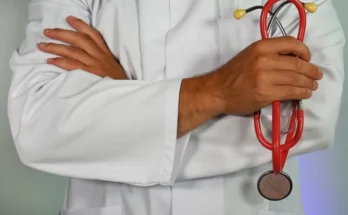Surgical extraction of any of the impacted or partially erupted third molar teeth commonly called as the wisdom teeth is the surgical procedure often performed. This process is commonly advised by dentists when the third set of teeth, wisdom teeth, becomes an issue, which include pain and future issues. Knowledge of why it is necessary to remove the appliance, how this is done, and what to do to promote healing can be beneficial in decision making related to the procedure and in recovery.
Why Wisdom Teeth Are Removed
Wisdom teeth are considered as the third molars that develop in the late teens up to early adulthood at seventeen to twenty-five years old. Most individuals can accommodate these teeth; however, not everyone does and it becomes necessary to remove them. Common reasons for wisdom tooth removal include:Common reasons for wisdom tooth removal include:
Impaction: The last teeth in the main are the third molars also known as the wisdom teeth, sometimes they may fail to emerge from the gum or emerge partially and get trapped within the jawbone or the gum. Some of the effects include: pain, and infections in the affected teeth, and harm to other neighboring teeth.
Crowding: It results in overcrowding. For instance, the wisdom teeth exert pressure on other teeth. For example when there is compromised space in the mouth a person might have alignment complications or disruption of special work such as orthodontic work.
Infection: Impacted third molars which has a portion of it that has erupted causes formation of pouches in the surrounding gum ,where bacteria colonize and cause pericoronitis.
Cysts or Tumors: Thus, impacted wisdom teeth can cause cyst or tumor formation in relation to jawbone and/or neighboring teeth.
Decay: These are teeth that are located at the posterior part of the mouth, and thus very hard to floss. It can result in cavities of the teeth or pyorrhea of the gums.
The Procedure
It is common to have this surgery done by an oral surgeon or by a general Best Dentist in Lahore with an advanced level of training in the procedures involving surgical extraction of teeth. Depending on how complicated the particular case is, and also depending on the location of the teeth that are impacted, the procedure may differ. Here’s what to expect:
Pre-Operative Assessment: Your dentist or oral surgeon will explain the procedure in detail and perform thorough examination and sometimes, take X rays for better visualization and to decide on the type of removal.
Anesthesia: The procedure is typically done under local and this will involve administration of a local anesthetic which numbs the area around the affected tooth. In some cases or if the patient is nervous or anxious, sedation or general anesthesia may be administered.
Extraction: Subsequently the surgeon will have to open up the gum by making a small cut to expose the tooth required. If the tooth is impacted, it may be necessary to loosen it and possibly, split it into several pieces for its extraction. The wound is then cleaned, and one might require suturing to enhance healing after the extraction is done.
Recovery: After the extraction, you will be observed until the anesthesia Zeit has elapsed out of the organism. Prescribed instructions for the management of pain, oral hygiene practices, and diet regulations after the operations will be given to you.
Post-Operative Care
As with any other surgery, adequate care after surgery is very important to make sure that there are no complications after removal of the wisdom tooth. Key aspects of post-operative care include:Key aspects of post-operative care include:
Pain Management: Paracetamol or aspirin together with other over the counter drugs or prescribed drugs can reduce pain. Administering ice packs to the outside of the face also helps in reducing the instances of swelling.
Diet: Do not consume hot, spicy, or hard foods that can cause discomfort when healing is still happening in the extraction site; go for soft foods and liquids for the first few days. They comprise applesauce, yogurt, mashed potatoes, and many others.
Oral Hygiene: After 24 hours it is safe to wash the mouth with salt water to keep the mouth clean. It is recommended that direct brushing on the extraction site should not be done several days after the extraction.
Avoid Smoking and Straws: When using smoking straws, they make suction and if this suction pulls out the blood clot forming in the socket, there will be what is referred to as the dry socket.
Follow-Up: Follow up for any follow up appointments you must make with your dentist or your oral surgeon for follow-up for healing issues or any issue related to your surgery.
Potential Risks and Complications
While wisdom tooth removal is generally safe, it is essential to be aware of potential risks and complications, such as:While wisdom tooth removal is generally safe, it is essential to be aware of potential risks and complications, such as:
Dry Socket: This happens when a blood clot formed in the site of extraction, breaks off, thereby causing the bone and the nerves to be broken. It also leads to severe pain and prolongation of time ‘healing’.
Infection: If bacteria get into the extraction area an infection may develop.
Nerve Injury: Occasionally, the operation may cause several nerve injuries which may result in tingling or numbness of the lip, tongue or chin.
Bleeding: A normal amount of blood will occur at various stages of the healing process; however, persistent blood flow should be reported to the Dentist in Rawalpindi or oral surgeon who treated the patient.
Conclusion
The extraction of the third molars is known to be one any dental surgeon can perform and effectively reduce pain and any other future dental issue. From knowing the reasons for extraction, the process that is bound to follow and how to handle yourself post the exercise, you will be able to have successful results and quick recovery. If you have any worries towards your wisdom teeth, discuss with your dentist or oral surgeon for further advice.



